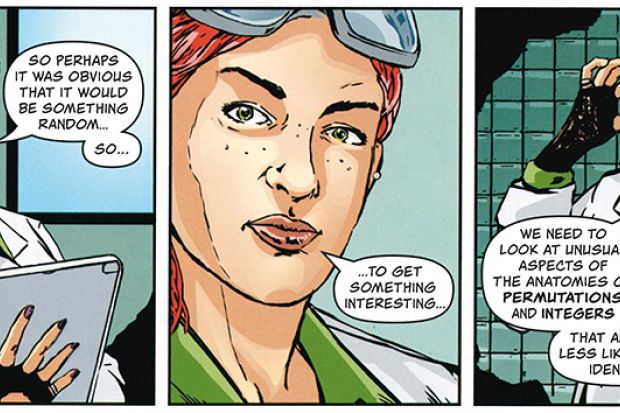There are few limits to the ingenuity with which some academics will try to popularise their discipline.
Take Prime Suspects: The Anatomy of Integers and Permutations, shortly to be published by Princeton University Press, and written by Andrew and Jennifer Granville. The former is the Canada research chair in number theory at the University of Montreal and professor of mathematics at UCL, while the latter is described as “an educator, award-winning film director and theater producer, writer, and director”.
They summarise the book’s central theme as follows: “Integers and permutations are fundamental mathematical objects that inhabit quite distinct worlds though, under more sophisticated examination, one cannot help but be struck by the extraordinary similarities between their anatomies.” This might sound like a topic with little entertainment value, suitable only for a textbook or monograph aimed at the initiated. In fact, Prime Suspects has its origins as “a screenplay set in a metaphorical fantasy world, where detective mathematicians interpret several key notions, eventually discovering some of the more interesting theorems in this area”. It has now been transformed into a graphic novel, in the style of hard-boiled detective fiction, illustrated by Robert L. Lewis.
All the main characters are named after famous mathematicians, while the three murder victims are mafioso Arnie Integer, ballerina Daisy Permutation and Polly Nomial. On the trail of the killer is Detective von Neumann, who takes the unusual view that mathematicians have a crucial role in solving crimes. So he recruits the help of the charismatic Professor Gauss, first seen lecturing on forensic science to a hall full of students. Several are jockeying for position, desperate for the chance to be his new research assistant, including a young woman with a nose ring called Emmy Germain – named after two of the great pioneering female mathematicians, Sylvie Germain and Emmy Noether.
And so the stage is set for a story that unfolds in casinos, pool halls, dark tunnels and abandoned mansions, while also featuring pathologists, prime numbers, mathematical puns and unexpected plot twists. The authors have the somewhat optimistic hope that it will help “popularize the fascinating and extraordinary similarities between the fine details of the structures of integers and permutations”. They are more obviously successful in “draw[ing] attention to several key cultural issues in mathematics”, including “how research is done, particularly the roles of student and advisor” and “the role of women in mathematics today”.
The result is a total one-off. The Granvilles are well aware that even in a book peopled by “mathematical superheroes and villains” who occasionally launch into discussions of Dickman-de Bruijn functions and other pretty impenetrable topics, the characters need to be “strong enough to drive the plot and bring color and life to the story”. It is all very good fun on that level. Whether or not the authors also manage to get across to non-specialists the arcane delights of integers and permutations, they can only be applauded for an exceptionally bold and unusual attempt.



